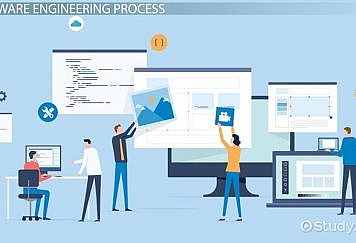Deduction management is vital for suppliers, manufacturers, and distributors who sell products or ship to various retail partners. Deductions are the amounts that retailers or shippers deduct from the invoices of their suppliers for various reasons, such as damaged goods, late deliveries, pricing errors, or promotional allowances. Deductions can have a significant impact on the bottom line, erode the gross profit margin, and misrepresent the accounts receivable (AR). Hence, it is important to clear deductions from the AR ledger on time.
However, many businesses make common mistakes and pitfalls in deduction management, such as inadequate documentation, unclear payment terms, delayed invoicing, etc. These mistakes can lead to errors, disputes, revenue leakage, cash flow issues, and customer dissatisfaction. In this article, we will explore how to avoid these mistakes and pitfalls and improve the deduction management process and outcomes.
Inadequate Documentation
One of the common mistakes in deduction management is inadequate documentation. Documentation is the key to validating and resolving deductions, as it provides proof and evidence of the transactions and agreements between the parties. However, many businesses fail to keep the documents organized, complete, and accessible, which can lead to errors, disputes, and revenue leakage in deduction management.
Some of the documents that are required for validating and resolving deductions are:
- Proof of delivery: This document shows that the goods were delivered to the customer in the agreed quantity and condition.
- Invoices: These documents show the details of the goods sold, the prices, the discounts, and the payment terms.
- Orders: These documents show the details of the goods ordered by the customer, the quantities, and the delivery dates.
- Contracts: These documents show the terms and conditions of the business relationship between the parties, such as the payment terms, the penalties, the dispute resolution process, etc.
To avoid the mistake of inadequate documentation, businesses should keep the documents organized, complete, and accessible. Some of the tips to do this are:
- Use a cloud-based document management system that can store, manage, and retrieve documents from anywhere and anytime.
- Use a standardized naming and filing system that can help identify and locate the documents easily and quickly.
- Use a digital signature and encryption system that can ensure the authenticity and security of the documents.
- Use a backup and recovery system that can protect the documents from loss or damage.
Unclear Payment Terms
Another common mistake in deduction management is unclear payment terms. Payment terms are the conditions and agreements that govern the payment process between the parties, such as the discounts, the allowances, the penalties, and the deadlines. However, many businesses fail to define and communicate the payment terms clearly and consistently, which can lead to confusion, disagreements, and deductions in deduction management.
Some of the payment terms that need to be clearly defined and communicated are:
- Discounts: These are the reductions in the invoice amount that are offered to the customer for various reasons, such as early payment, bulk purchase, etc.
- Allowances: These are the amounts that are deducted from the invoice amount that are offered to the customer for various reasons, such as promotional activities, cooperative advertising, etc.
- Penalties: These are the amounts that are added to the invoice amount that are charged to the customer for various reasons, such as late payment, returned goods, etc.
- Deadlines: These are the dates by which the payment or the dispute should be made or resolved.
To avoid the mistake of unclear payment terms, businesses should negotiate and establish clear and mutually beneficial payment terms with customers. Some of the tips to do this are:
- Use a written contract that specifies the payment terms and conditions and get it signed by both parties.
- Use a clear and detailed invoice that shows the payment terms and the calculation of the invoice amount.
- Use a reminder and follow-up system that notifies the customer of the payment due date and the status of the payment.
- Use a dispute resolution system that provides a clear and fair process for resolving any issues or disagreements regarding the payment terms.
Not Investing in Good Automated Deduction Management Software
A third common mistake in deduction management is not investing in good automated deduction management software. Deduction management software is a multi-faceted suite of solutions that uses robotic process automation (RPA) to automatically resolve and dispute customer deductions and chargebacks from various retailer and shipper portals. It also seamlessly integrates with existing ERP systems and data sources and provides a consolidated view of deductions from multiple channels. Moreover, it leverages artificial intelligence (AI), machine learning (ML), and blockchain to enhance the deduction management process and provide valuable insights.
However, many businesses do not invest in good automated deduction management software, either because they are unaware of its benefits, or because they are reluctant to change their existing systems and processes. This can limit the capabilities and benefits of deduction management, and prevent businesses from achieving optimal results and outcomes.
Some of the features and functions that good automated deduction management software can offer are:
- RPA: This feature can automate the tedious and repetitive tasks involved in deduction management, such as creating and identifying deductions from various customer-provided remittances, collecting and verifying documents, submitting disputes, and updating the AR ledger.
- Cloud: This feature can help businesses store, manage, and access data and documents from anywhere and anytime, and ensure scalability and reliability.
Check out iNymbus: Deduction Management Software. With their advanced technology and experienced team they have been able to get the following results for their clients:
- Reduce costs by 80% or more
- Save hundreds of hours of manpower
- Increase speed and efficiency by up to 30X
- Recover lost revenue by capturing 100% of deductions
Conclusion
Deduction management is a vital process for any business that wants to maintain a healthy cash flow and profitability. However, many businesses make common mistakes and pitfalls in deduction management, such as inadequate documentation, unclear payment terms, and delayed invoicing. By avoiding these mistakes and pitfalls, businesses can improve the efficiency and accuracy of the deduction management process and outcomes. They can also reduce their processing costs, increase their recovery rates, improve their customer satisfaction, and enhance their competitive advantage.
If you want to learn more about deduction management or improve your deduction management process, you can contact us or request a demo. We can help you find the best solution for your deduction management needs and challenges.
Follow TechStrange for more!





